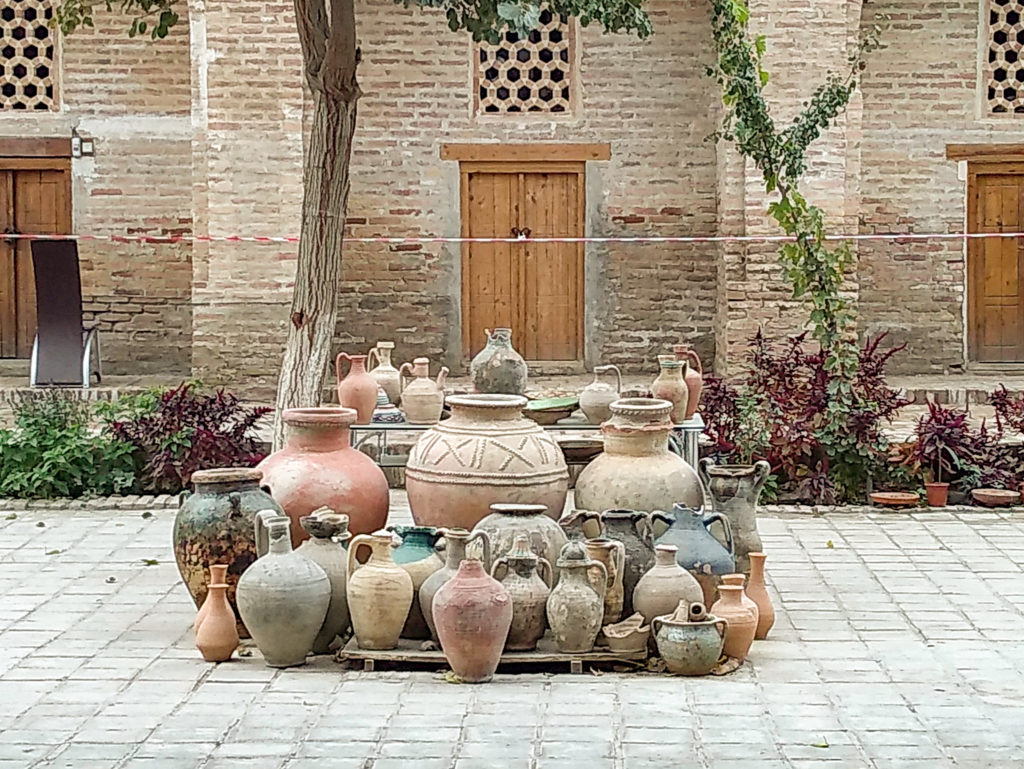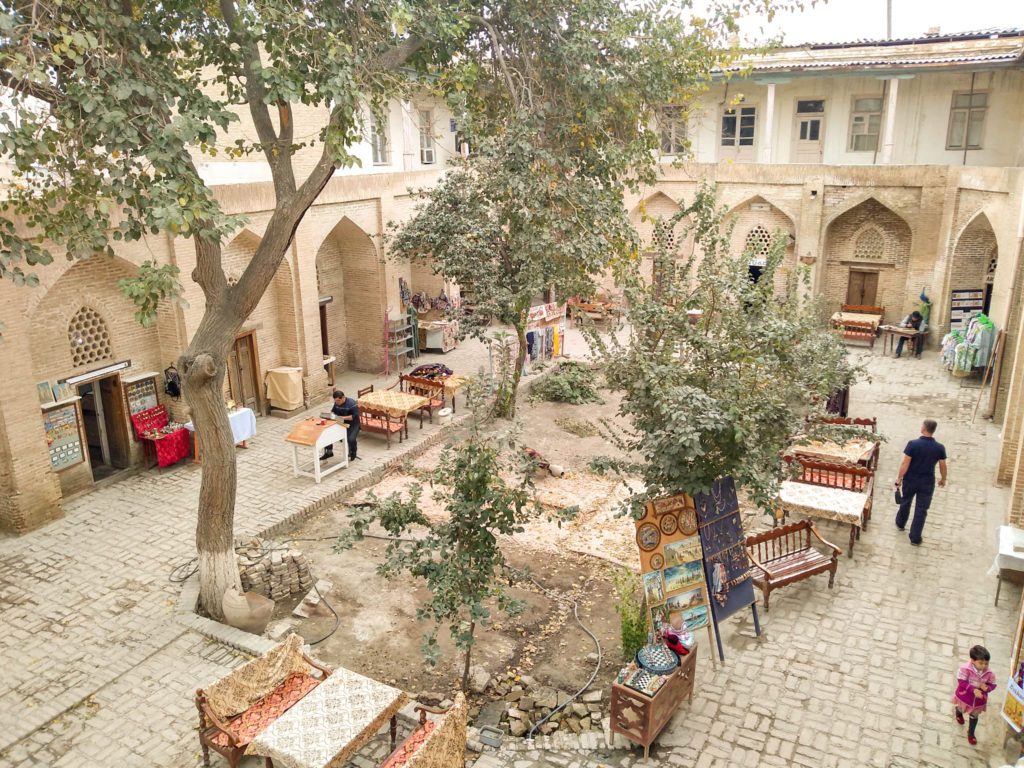“The City of museums”.
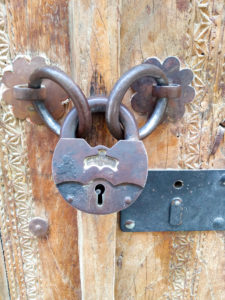
Where is Bukhara?
Bukhara situated on an oasis in the Zerafshan river delta in central Uzbekistan. Bukhara lies on a crossroads of the ancient Silk Road trade routes that stretched across Central Asia. Being a vital stopping point for merchants. Rich in historical sites, it has about 140 architectural monuments
Getting there
The journey from Khiva to Bukhara was on the train.
Our accommodation
Our time in Bukhara was spent at the Guesthouse Khalima, booked through Booking.com.

A nice clean guest house, with modern rooms. Our room was on the first floor and had a shared bathroom. A good continental breakfast was provided.
We had a very pleasant evening meal in the Labi hovuz restorant.
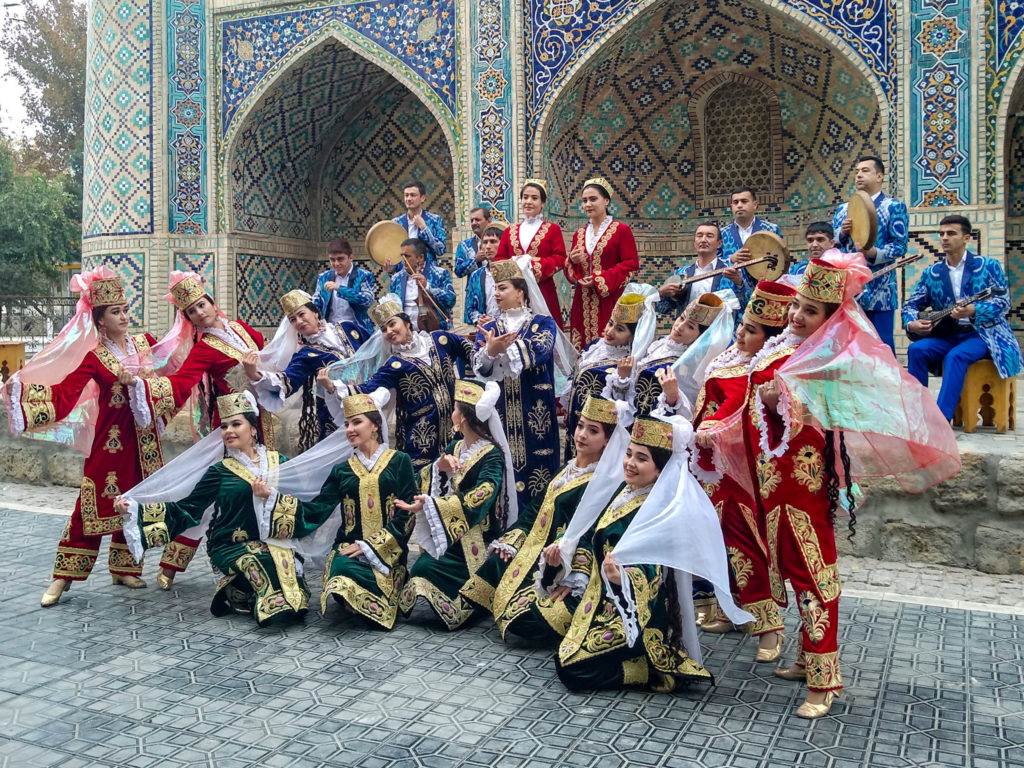
Places of interest
In our opinion, we found Bukhara to be more of a tourist destination than Khiva was and it is far more spread out.
Having said that, it is still beautiful and has its own charm. There in late October, meant warm weather and few tourists, making sightseeing easy and comfortable.
Wandering around through the streets and back streets brings you across a plethora of beauty.
Kalyan Minaret
Part of the Po-i-Kalyan mosque complex, this minaret is one of the most prominent landmarks in the city. In times of war, the minaret was used as a watchtower to look out for the enemy.
The tower impressed Genghis Khan so much he ordered it to be spared while his men destroyed everything else. Referred to as the Tower of Death. Because criminals were executed by being thrown from the top.
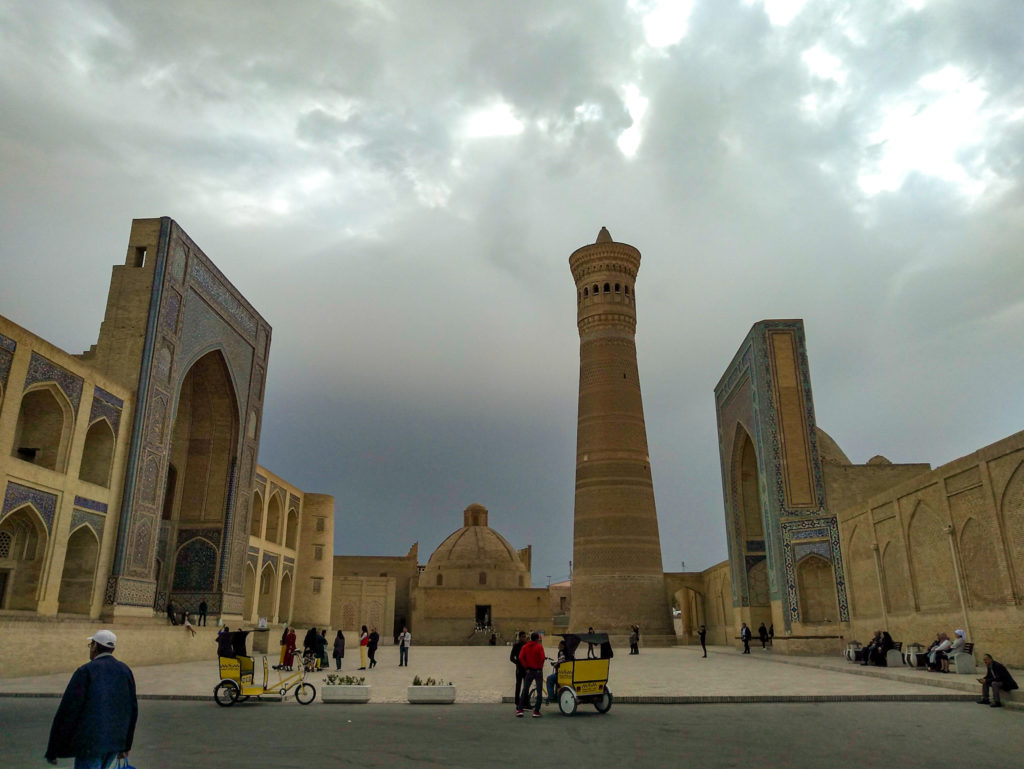
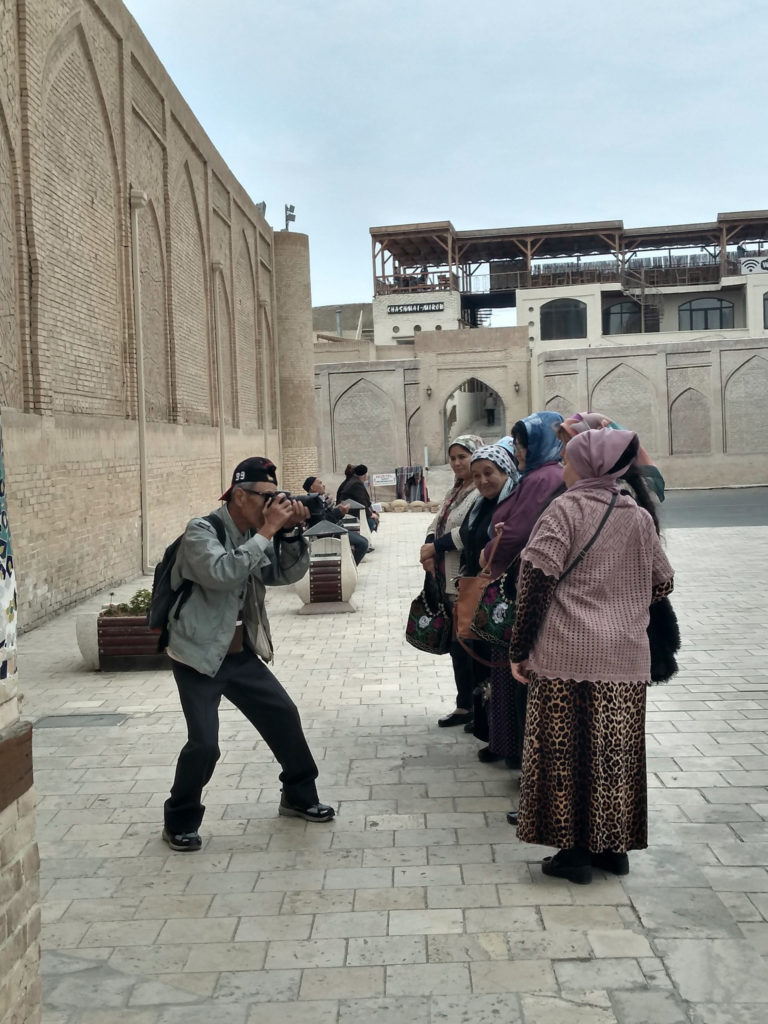
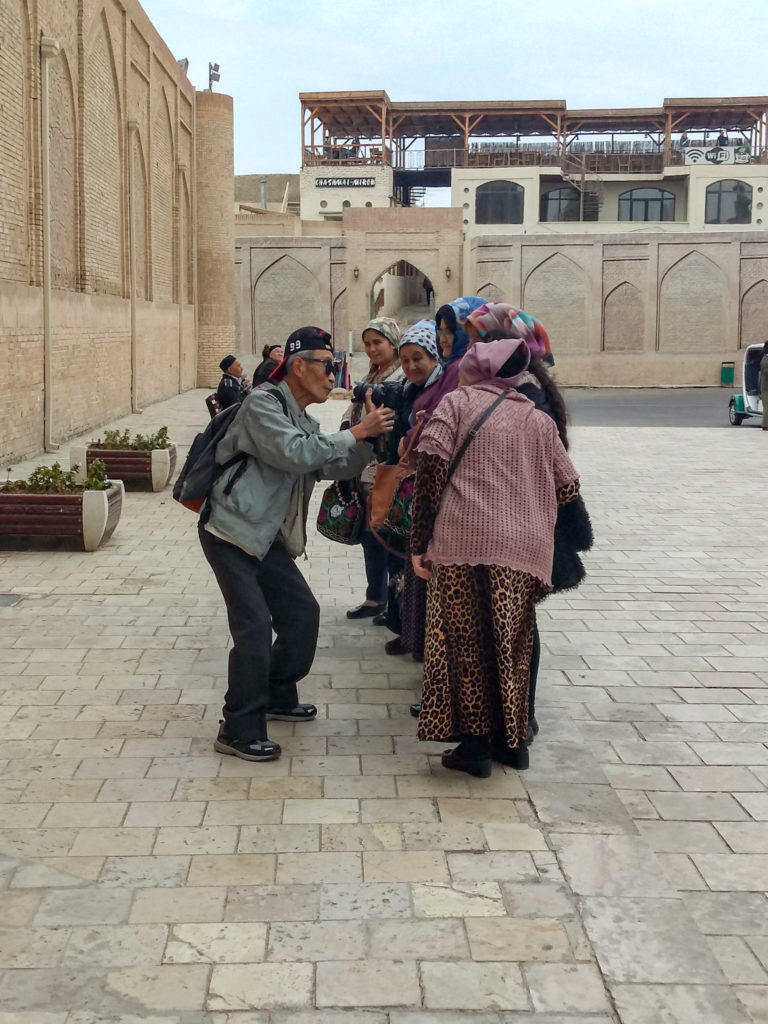
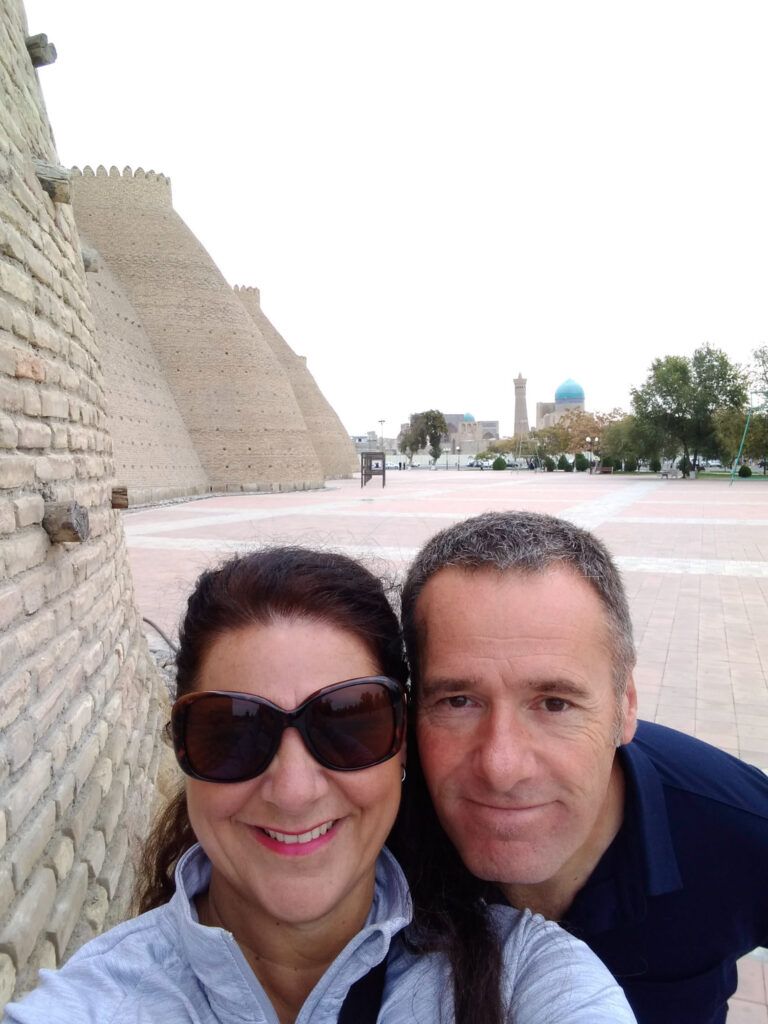
Domed Bazaars
The three remaining Domed bazaars used to be much larger and are now really just for the tourists. The buildings are impressive and it is a pleasant stroll through looking at the things for sale.
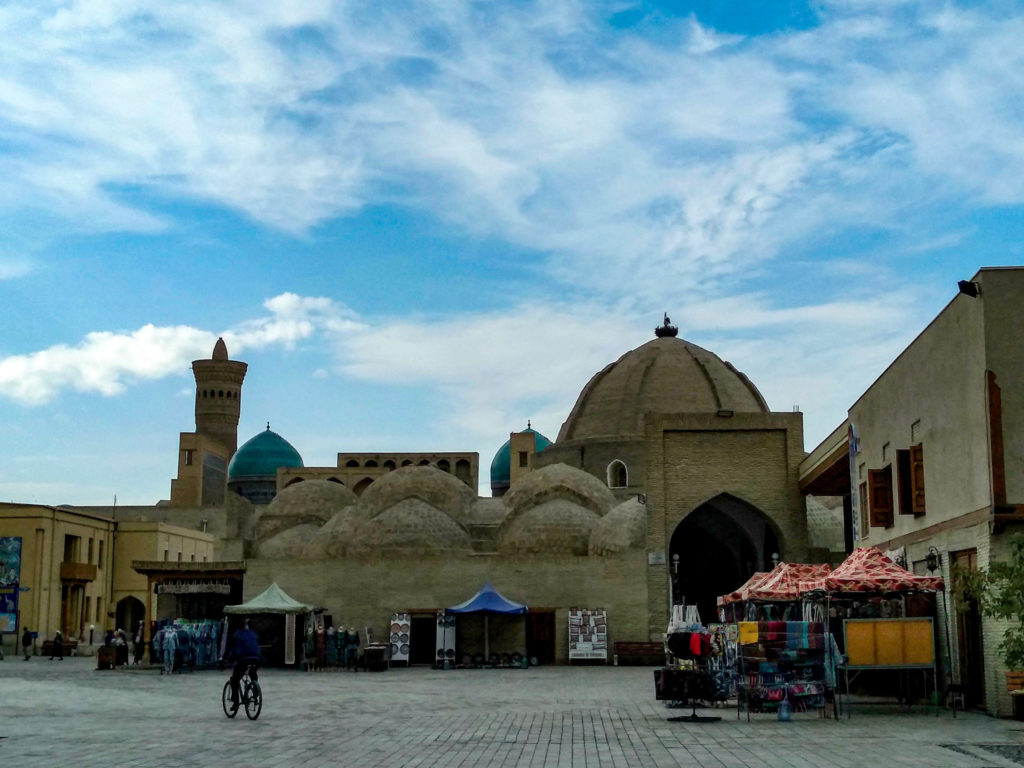
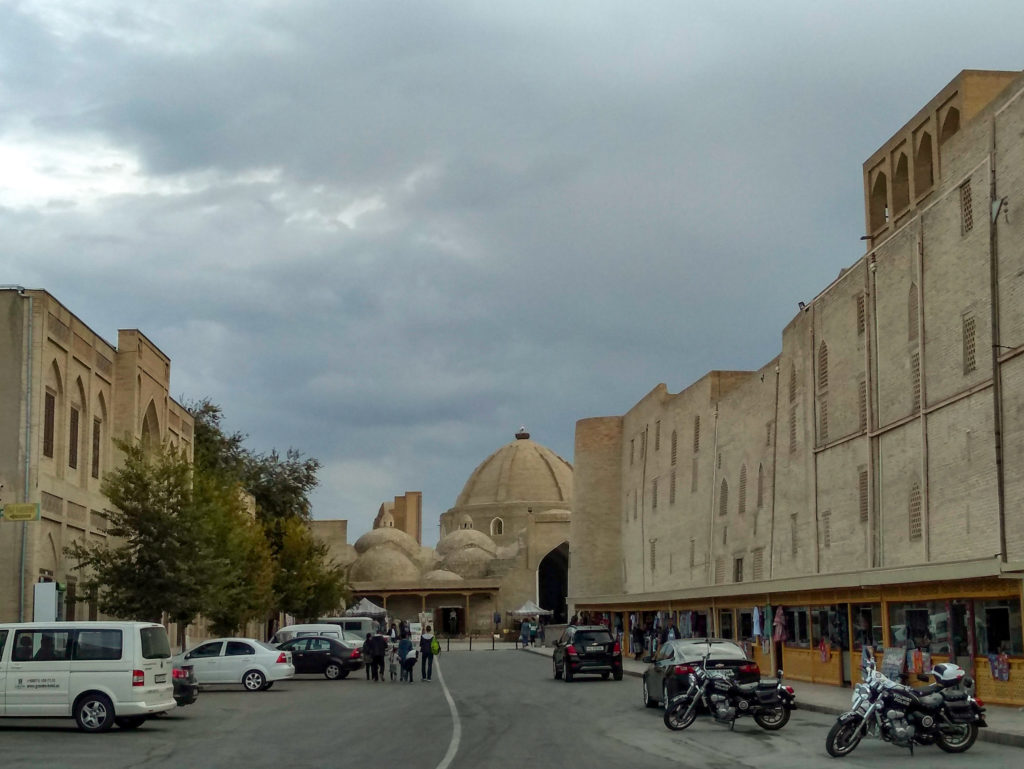
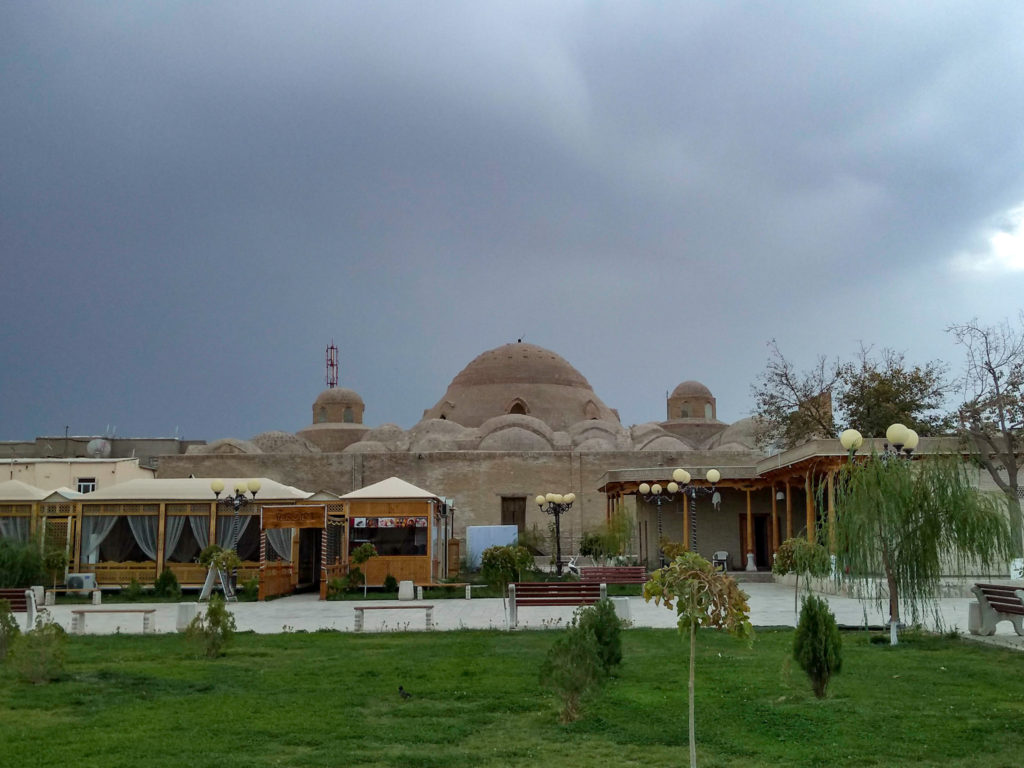
Ark citadel
The Ark was the fortified residence of the rulers of Bukhara. The museums inside the Citadel tell the story of Bukhara’s history. Visiting here is a must, even if it is just to see the impressive entrance gate and city walls from the outside.
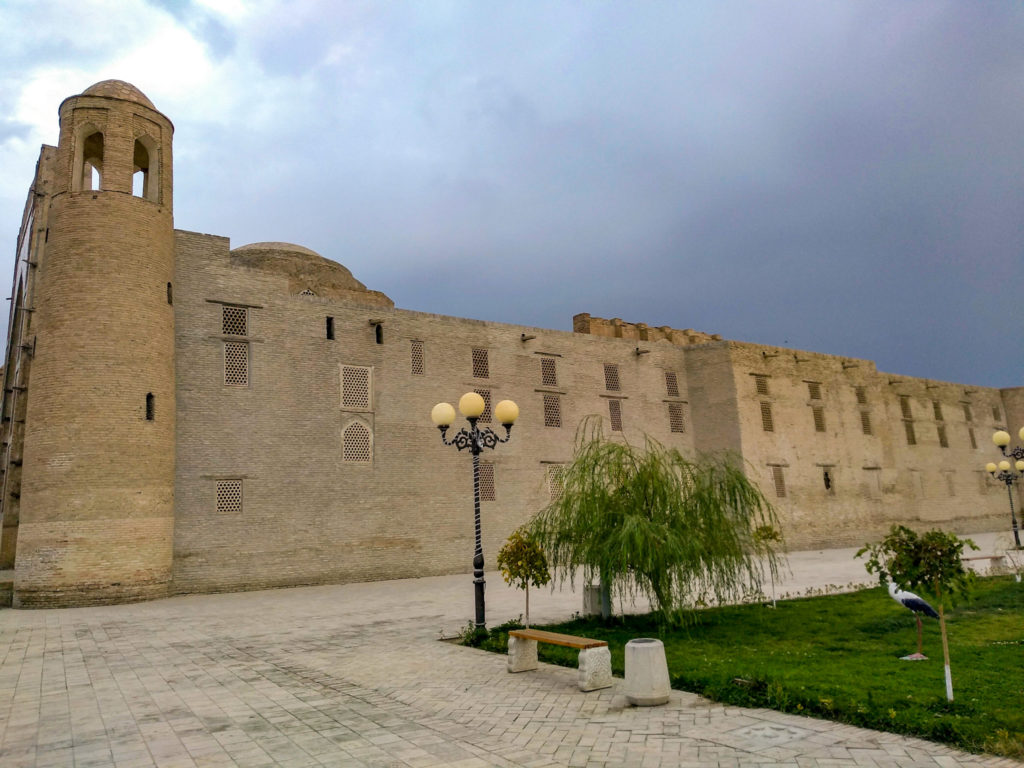
Sukhov water tower
A tourist attraction opposite the entrance gate to the Ark Citadel. Popular with locals and tourists alike. The second floor houses a restaurant and on the third floor is the viewing deck with nice views over the Ark Citadel.
Lyab-i Hauz
This is the heart of Bukhara and is the area by the pond. Derived from the literal Persian translation of Lyab-i Hauz. The ponds were the city’s main source of water. During the 1920s & 1930’s most of the ponds were filled in, as they were renowned for spreading disease.
The Lyab-i Hauz survived because it is the centrepiece of a magnificent architectural ensemble. Consisting of the Kukeldash Madrasah, a khanaka, and a madrasah. The tea houses are full of locals and tourists eating ice creams or drinking tea and eating baklava, relaxing as the world goes by.
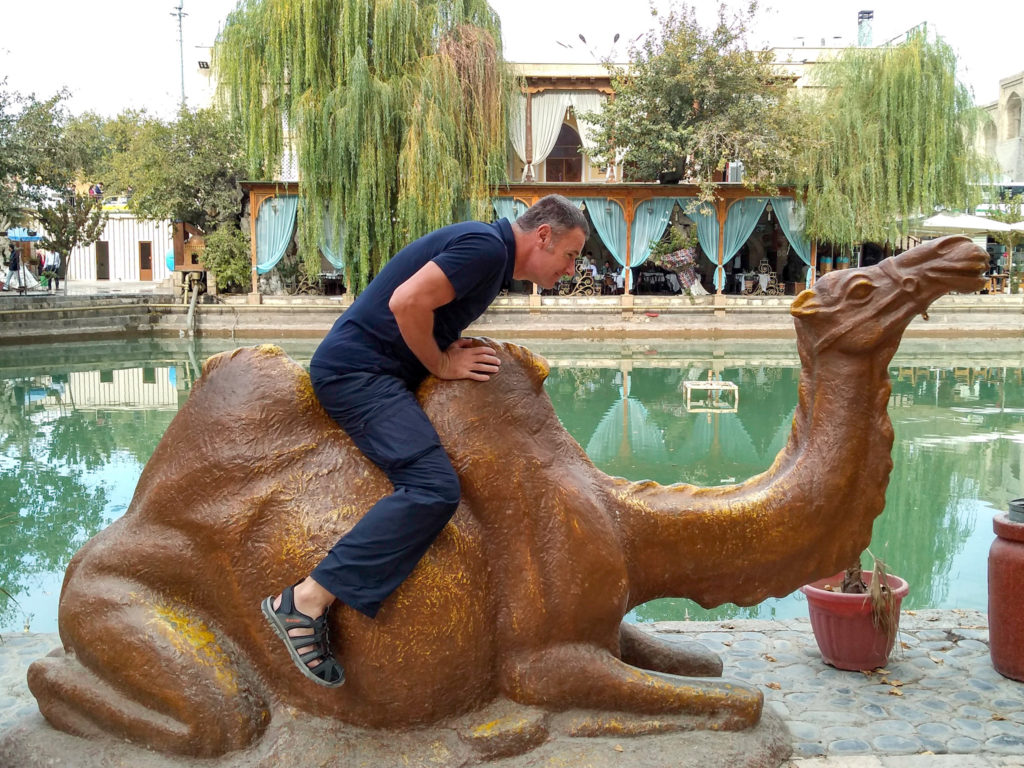

Chor Minor
Also known as the Madrasah of Khalif Niyaz-kul, was a historic gatehouse for a now-destroyed madrasa. In Persian, its name means “Four minarets”.
Magok-i-Attari Mosque
The oldest surviving mosque in Central Asia, dating back to the 800s. The mosque is almost 6 metres below ground level with 12 domes.
Getting around
Many of the streets in the Old City are too narrow for cars. Owing to its size, the majority of the sights can be seen by walking around.

